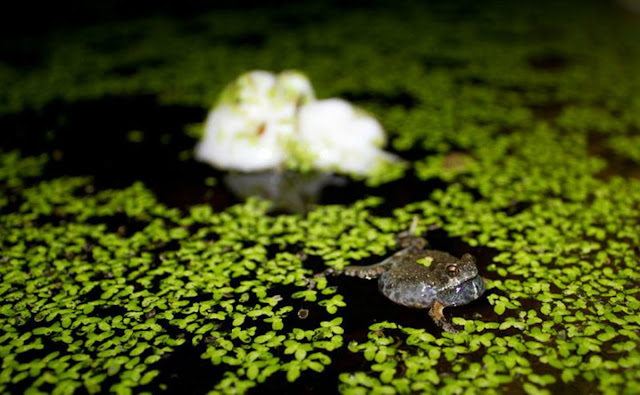Carribean Frogs’ Foam Could Deliver Drug Therapy
Foam from minuscule frogs could be used to deliver antibiotics and prevent infections, according to a new study.
 |
| A Tungara frog. Photograph courtesy of: Brian Gratwicke/Flickr |
Foam made by tiny Trinidadian frogs could be used to deliver antibiotics and prevent infections, a new study has found. The research was unveiled by scientists Sarah Brozio and Dr. Paul Hoskisson of the Strathclyde University at the Microbiology Society’s Annual Conference in Liverpool.
Tungara frogs or Engystomops pustulosus from Trinidad measure less than five centimeters in length. After mating, the minuscule amphibians produce a floating foam nest. These resistant bio-foams protect the spawn from harsh weather, predators, and potential pathogens.
The Strathclyde University researchers observed that the foam is highly stable and non-toxic to humans. Furthermore, it is able to take up drugs and also release them at a stable rate.
“This foam comes from a tiny frog and yet offers us a whole new approach that could prevent wound infections, and with increasing antibiotic resistance it’s important that all new tactics are explored,” said Sarah Brozio.
Inspired by the bio-foam, the scientists are now working to produce a synthetic foam that is as stable as the Tungara Frog foam.
At present, the researchers have engineered E. coli bacteria to produce two of the foam’s protein constituents, including Ranaspumin-2, which on its own produces a short-lived foam that is also non-toxic to human cells.
The team believes that the tough bubbles and the stability of the foam could be used to deliver antibiotics to treat severe burns, which frequently become infected.
“While foams like these are a long way from hitting the clinic, they could help in burns and wound treatment providing support and protection for healing tissue and delivering drugs at the same time,” said Dr. Paul Hoskisson, who led the research team.
Comments
Post a Comment